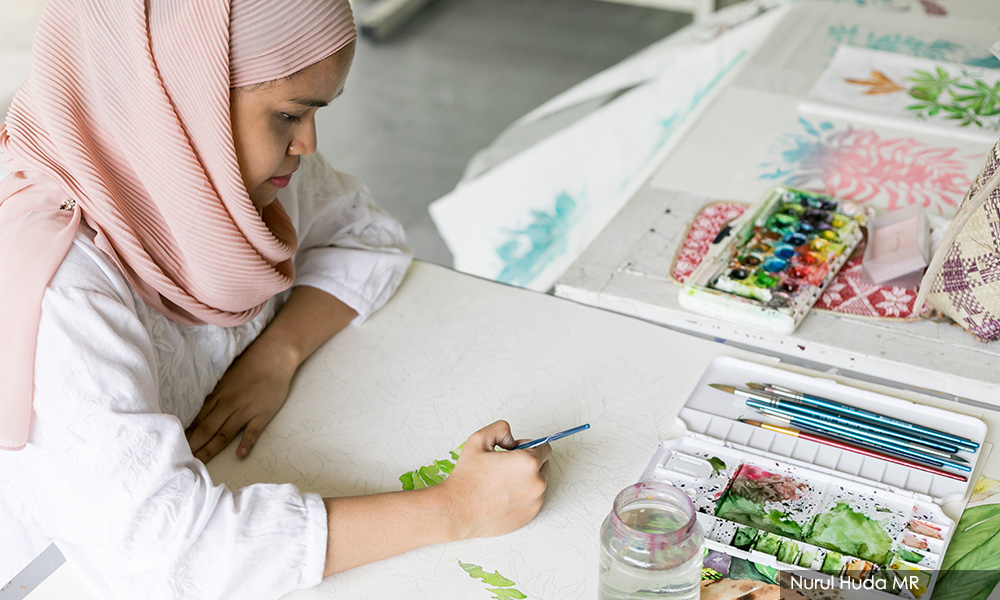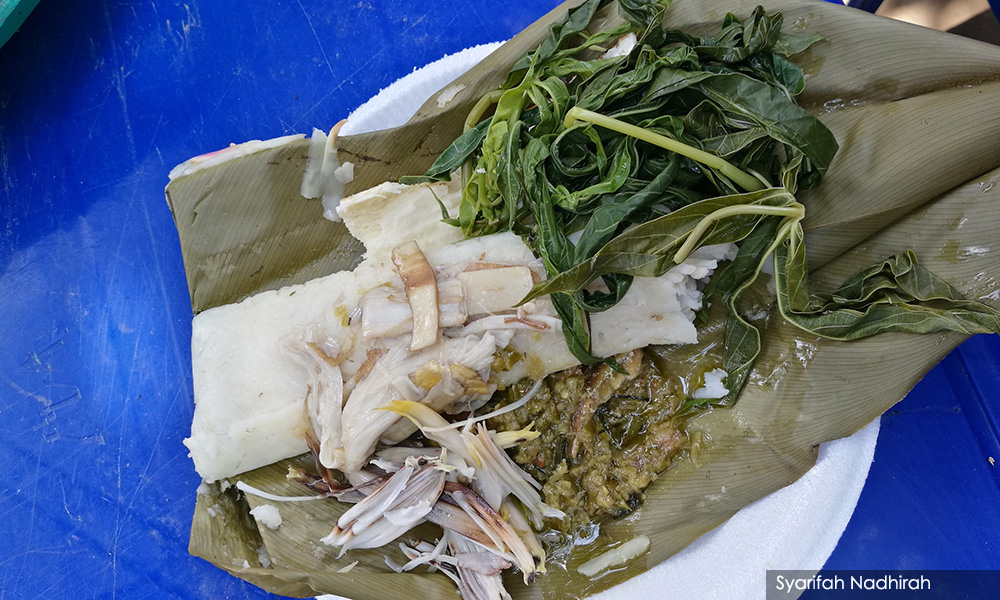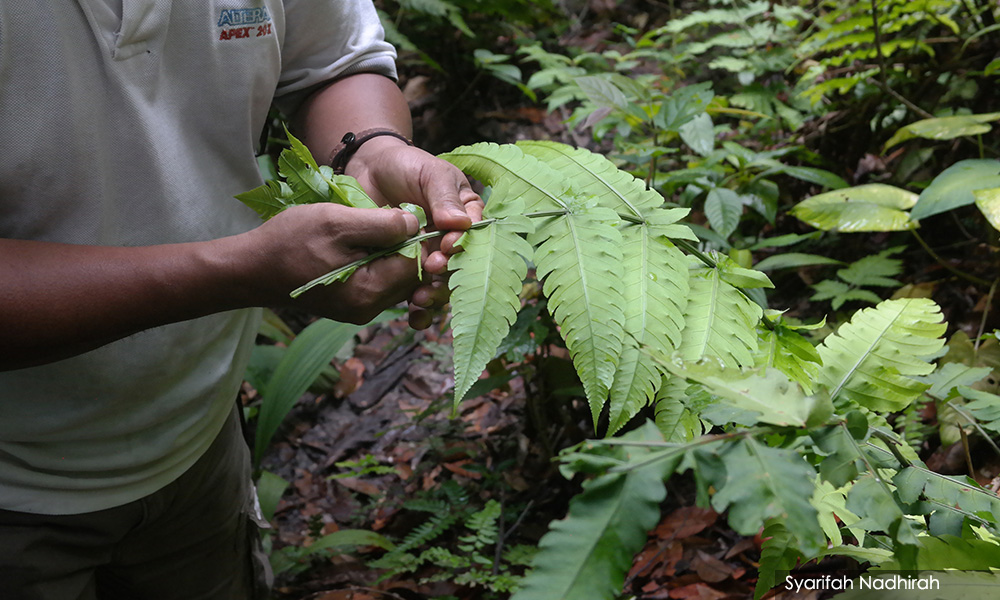Painting plants and the Orang Asli's fight - this is Nadhirah's story
MALAYSIANSKINI | Who would have expected paintings of plants would be able to give a voice to those who are “oppressed”?
For 27-year-old visual artist Syarifah Nadhirah Syed Abdul Rahman, her interest in plants was initially just about honing her art skills.
However, that interest eventually turned into a sincere effort to showcase the Orang Asli’s knowledge about plants in their heritage forests.
Through the book ‘Recalling Forgotten Tastes’, Nadhirah is now retelling the knowledge of five Orang Asli individuals across two states through anecdotes and watercolour paintings.
There are a total of 32 paintings of plants and food rendered through watercolour and pen in the book.
Meanwhile, the anecdotes convey the experiences of exploring the forests and learning more about the Orang Asli culture.

Nadhirah herself visited four Orang Asli villages around Selangor and Negeri Sembilan before writing and illustrating the book.
Among the villages she visited were Kampung Batu 12 Gombak, Kampung Tohor Jelebu, Kampung Busut Baru and Kampung Pulau Kempas.
Kampung Batu 12 is not far from her house in Taman Melawati, Gombak.
However, her visits, which she started since last year, were restricted this year due to the Covid-19 pandemic.
“My visits were restricted because of the movement control order (MCO). But I already know the Orang Asli community there.
“So, as soon as the MCO was lifted, I continued my visits,” she said.
Touched by the welcome
Nadhirah said her visits to the villages were warmly received. The Temuan and Semai tribes are very welcoming of anyone who wants to learn more about their forests.
“If we’re speaking about understanding the culture of the Orang Asli, for me, we are from the majority who are very isolated from their culture. We know absolutely nothing about their culture.
“I went there to learn about plants and how the forest is a huge part of their identity.
“So when my arrival was welcomed, I felt so touched,” she said.
Nadhirah initially just wanted to learn more about plants.
However, she was inspired to record the experiences and knowledge she garnered from her visits after learning more about how the forests she visited were being threatened by development.
“Originally, I just wanted to learn about the ecosystem of their forests. But after a while, I think it is important for this book to be written on more than just their forests.
“I want to tell everyone about their determination in opposing development projects. It is no longer just about the plants.
“I want to tell people about the backgrounds of their lives that many people do not know anything about.
“It is important for me to write these stories in this book, so that we can understand why they are making so much effort to save their forests,” she said.

Degazetted forest reserve
Development sometimes leads to a forest reserve’s status being degazetted, Nadhirah said.
“As someone who has a special position in this country, it might be difficult for us to understand the culture and beliefs of the Orang Asli. Through this book, I hope that we can better understand their culture.
“There are many ways for us to show solidarity with the Orang Asli, not just through activism. I hope my book will become one of the ways for us to understand why they want to fight for their rights.
“It is already 2020, but the Orang Asli are still being oppressed, and their forests are being played up for politics. It is our shared responsibility to change their lives for the better,” said the architecture graduate from the International Islamic University of Malaysia (IIUM).
She said an issue such as the degazetting of the Kuala Langat Forest Reserve had slighted the residents of a nearby village.
“They (Orang Asli) are aware of their current situation. They are working very hard to fight the project for this degazetted forest reserve.
“If we take their forest, it is as if we are taking away their trust and the source of their income,” she said.
Many activists and lawyers are working together to fight against this project, she said, but the issue requires wider attention from society.
“For me, this issue is still being looked at as a trivial issue. Our society and the media should be more vocal against this project,” she said.
Nadhirah hopes her efforts to help the Orang Asli community do not stop with just the book.
“The fight does not stop here. I want this to be a continuous process.
“I also hope to work together with more people to fight for the stories of the Orang Asli community,” she said.

The Selangor government is planning to degazette a large part of the Kuala Langat (North) Forest Reserve, involving a land area of 930.93 hectares (97.1 percent) of the forest reserve which covers an area of 958 hectares.
Last February, Selangor Menteri Besar Amirudin Shari said it was a peat forest that has since deteriorated, and it posed a fire risk to the surrounding areas.
He had explained that the development plans in the area were “mixed developments”, and it included the East Coast Rail Line (ECRL).
Amirudin also gave his assurance that the Orang Asli community would not be affected and the loss of the forest will be replaced with the gazetting of a new area as a forest reserve.
However, the move was opposed by Orang Asli groups, environmental activists and several political leaders.
Valuable plants

Meanwhile, through her visits, Nadhirah got to learn more about the Temuan and Semai tribes.
For example, she learned how to cook food from the Semai tribe, which uses plants like the ‘belhau’ and ‘daun lerek’ as ingredients.
The Temuan tribe are knowledgeable in the art of traditional medicine by using ‘keladi kemoyang’ and ‘jerangau’ for women during the confinement period.
Nadhirah was also advised by the villagers not to reveal the location of valuable plants, such as the ‘tongkat ali’, in her book because they were worried that poachers would target the plants.
“They are worried that there might be some who want to take advantage. These plants hold a very high value in their lives.
“That is why they only take what is necessary, unlike us who will take in huge quantities,” she said.

RM12.50 / month
- Unlimited access to award-winning journalism
- Comment and share your opinions on all our articles
- Gift interesting stories to your friends
- Tax deductable
